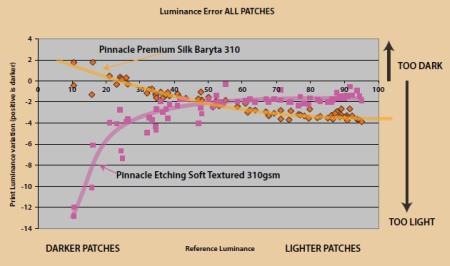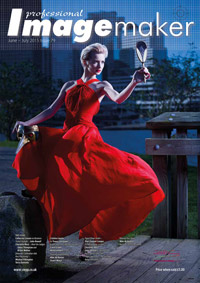articles/Paper/paper-spectrum-page1
The Great Paper Chase - Paper Spectrum Pinnacle Paper Range - part 1 of 1 2 3 4 5 6 7 8 9 10 11
by Mike McNamee Published 01/06/2015

Paper Spectrum are an independent distributor of ink-jet products and have operated out of Leicester for the last 19 years. They offer a comprehensive range of ink-jet paper, cartridges, greetings-card stock and pre-cut mount board along with a broad selection of Hahnemuhle products including their papers, archival boxes and varnishes.
They have assembled a strong portfolio of ink-jet media from a variety of sources to cover almost every conceivable need for the photographer and fine art printer. This goes under the brand name of Pinnacle.

We tested the samples from their tester packs of Fine Art and Photo media, a total of 15 papers in all. Although it required four solid days of profiling and auditing, the process was instructive as the range covers all types of media but the temperature, humidity and state of the printer heads were effectively removed as variables because of the short time over which the samples were created. Each paper was profiled using an Epson 4900 using Matt black or Photo black ink as appropriate. A 400-patch target was made at 1440dpi. The Epson media setting we guessed as appropriate (we recognise this might not have been perfect but the profiling should adjust for the inking level provided by the media setting). Then each icc profile was used to make our audit target and this was offered for analysis in our usual way. For any new readers, the audit process uses collections of colour patches for Fogra/Ugra V3, the Macbeth CC24 and SG targets, a grey ramp, density and metamerism patches, base white measurements (including fluorescence) and a set of HiGAM patches which are made from colours around the colour wheel at the known extremities of the Epson K3 HDR ink set. Measurements from these 240 patches are fed for number crunching to a spreadsheet which eventually spits out 18 analysis spreadsheets along with a summary chart containing 20 tables and graphs. This is the culmination of many hundreds of thousands of calculations which thankfully the computer chomps up in a matter of minutes. People have complained about the complexity of the reporting but we remain unrepentant, it is the only way, for example, that we can go back to our legacy data (from up to 15 years ago) and make meaningful comparisons - anything else is simply arm waving (and there is a lot of that about!).
Having established the baseline data and profiles we usually make prints from real images, make monochromes and then view samples in controlled lighting ( including UV for the base paper examination).
An additional test we carried out using the Pinnacle range was for the companion feature in this issue on signing prints. This opened a whole new barrel of inky worms but you can read about that later!
You are currently on page 1
- The Great Paper Chase - Paper Spectrum Pinnacle Paper Range page 1
- The Great Paper Chase - Paper Spectrum Pinnacle Paper Range page 2
- The Great Paper Chase - Paper Spectrum Pinnacle Paper Range page 3
- The Great Paper Chase - Paper Spectrum Pinnacle Paper Range page 4
- The Great Paper Chase - Paper Spectrum Pinnacle Paper Range page 5
- The Great Paper Chase - Paper Spectrum Pinnacle Paper Range page 6
- The Great Paper Chase - Paper Spectrum Pinnacle Paper Range page 7
- The Great Paper Chase - Paper Spectrum Pinnacle Paper Range page 8
- The Great Paper Chase - Paper Spectrum Pinnacle Paper Range page 9
- The Great Paper Chase - Paper Spectrum Pinnacle Paper Range page 10
- The Great Paper Chase - Paper Spectrum Pinnacle Paper Range page 11
1st Published 01/06/2015
last update 09/12/2022 14:57:21
More Paper Articles
There are 16 days to get ready for The Society of Photographers Convention and Trade Show at The Novotel London West, Hammersmith ...
which starts on Wednesday 14th January 2026





